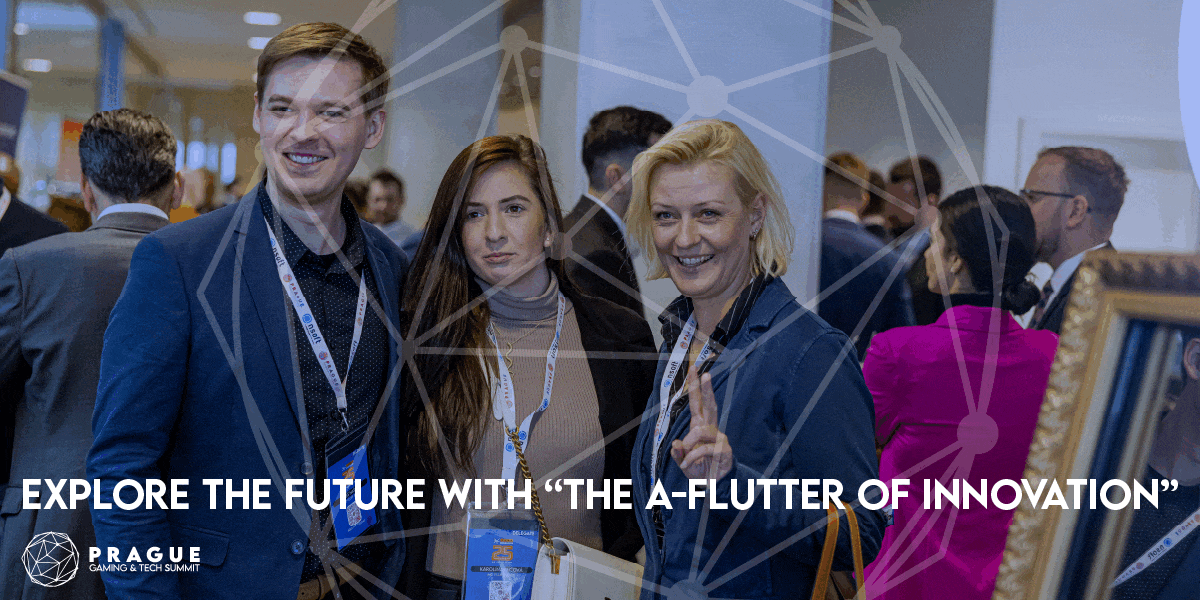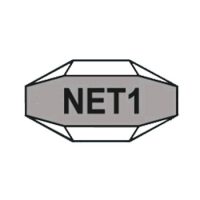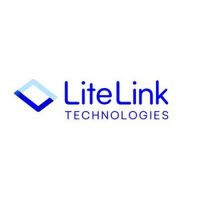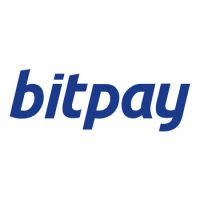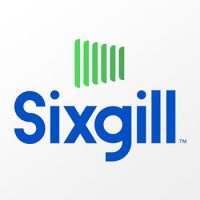Blockchain
RETRANSMISSION: HIVE Announces Quarterly Revenue of $14.3 Million, Gross Mining Margin of $3.6 Million and Achieves Adjusted EBITDA of $1.5 Million for the Quarter while HPC Revenue Strategy is Gaining Momentum With Annual Run Rate of $1.3 Million
Vancouver, British Columbia–(Newsfile Corp. – February 21, 2023) – HIVE Blockchain Technologies Ltd. (TSXV: HIVE) (NASDAQ: HIVE) (FSE: HBFA) (the “Company” or “HIVE”) a leading digital asset miners and green focused data center builder and operator, is pleased to announce the earnings report for the third quarter ended December 31, 2022 (all amounts in US dollars, unless otherwise indicated).
HIVE achieved revenue of $14.3 million this quarter, by mining 787 Bitcoin, with a 25% Gross Mining Margin representing $3.62 million of income from mining operations. This is notable, as the first full fiscal quarter for HIVE that does not include any Ethereum mining revenues, as the Ethereum Merge took place on September 15th, 2022. Furthermore, average Bitcoin prices in this current quarter decreased from the prior quarter by approximately 15%, continuing this crypto winter that affects the entire Bitcoin mining sector. However, through hedging our energy contracts, selling power back to the grid, and optimizing our operating capacity to focus on maximum profit per KWHR, HIVE has realized profit from mining operations this quarter.
The Company notes that HIVE’s production of 787 Bitcoin this quarter represents an increase of 13% year over year, with the same period last year, having mined 697 Bitcoin reflecting a continued growth in our operating hashrate. This is in large part a result of the completion of our New Brunswick data center campus, which we have seen reach over 1 Exahash of Bitcoin mining capacity this year, operating in a four-building data center campus, which HIVE owns, and includes our own substation, transformers and electrical infrastructure. This large increase in quantity of Bitcoin production stands even as network difficulty has increased by 60% in this one-year period, while Bitcoin prices and prices have fallen approximately 50%.
Frank Holmes, HIVE’s Executive Chairman, stated, “We wish to again thank our loyal shareholders for believing in our vision to mine both Ethereum and Bitcoin. We are sad to see the higher margin from mining Ethereum gone however our HPC strategy which has taken longer to roll out is now growing rapidly on a month over month basis. We are happy to share that our robust growth is scalable and could potentially increase 10x fold over the next year as the demand for our high quality chips due to the huge global demand for Ai projects like GPT CHAT, medical research, machine learning and rendering. Further, HIVE was the first to use our software to help balance the electrical grid and resell back energy whenever there is spike in demand. This strategy has been good for the community and HIVE. Even with a challenging quarter for the global digital asset ecosystem, where we saw the capitulation of crypto prices due to the implosion of FTX and the related contagion with other exchanges, lenders and hedge funds. Strategically, we have not borrowed expensive debt against our mining equipment or pledged our Bitcoins for costly loans, thus our balance sheet remains healthy to weather this storm. We believe our low coupon fixed debt; attractive green renewable energy prices and high performing energy efficient ASIC and GPU chips will help us navigate through this crypto winter. The most recent unexpected challenge has been in Sweden which we cover in greater detail in our interim filings.”
Aydin Kilic, President & CEO of HIVE, added, “HIVE has skillfully navigated the digital asset mining industry in a post-Ethereum merge, when many questioned how we could continue to generate profit from operations. This has been answered by our gross mining margins of $3.6 million this quarter, during a time when many other crypto miners are struggling for solvency. In fact, our Bitcoin holdings have increased by 30% year over year for the period ending December 31, 2022 with 2,372 Bitcoin. In addition to this, we saw Bitcoin mining difficulties increase 60% during this period, reaching an all-time high of almost 40T. HIVE navigated this quarter by selling energy back to the grid, repurposing our GPUs to mine Bitcoin, and upgraded our fleet of ASICs to improve our overall efficiency. As previously reported, our GPUs are currently doing $80 per megawatt hour in revenue, which is similar to Bitcoin mining economics with ASICs. I am incredibly proud of the team, as we have among the leanest G&A as a percentage of revenue among our peers in the industry. HIVE is dedicated to delivering its shareholders value and strives to excel in optimization and efficiency; this quarter the numbers illustrate the merit of our approach and our success. We strive to set the gold standard of operational efficiency at HIVE while constantly adapting to changing market conditions with an agility mindset.”
HIVE achieved a gross mining margin of $3.6 million for the quarter, a 77% decrease over the prior quarter of $15.9 million due to the loss of Ethereum revenues from the Merge and lower Bitcoin prices. This decline in gross mining margin was predominantly driven by significant lower average cryptocurrency prices during this period which negatively affected us as well as the entire Bitcoin mining industry.
On a relative basis HIVE has been able to mine with healthy profit margins during periods of market volatility because of being globally diversified and enjoying attractive power costs in Sweden, Iceland, and Quebec.
Furthermore, HIVE’s average cost of production per Bitcoin was $13,599 (including cost of goods sold, not including SG&A) for the quarter ending December 31, 2022, a 37% increase in cost from the previous quarter ending September 30, 2022. The company notes that from October 2022 onwards, with Bitcoin mining hash rates and Difficulty at all-time highs, it is expected that the cost of production for Bitcoin will increase for the industry at large, as less Bitcoin per Terahash is being rewarded at these difficulty levels.
According to Anthony Power’s monthly industry research we are proud to have achieved and maintained among the best operational uptime amongst all its peers, with HIVE repeatedly emerging as one of the most efficient crypto miners based on digital assets mined per Exahash (commonly measured as quantity of mined Bitcoin per Exahash of reported hashrate).
Further to the Company’s news release dated February 15, 2023, as a result of the filing on the date hereof of the Company’s interim financial statements and accompanying management’s discussion and analysis for the three and nine months ended December 31, 2022 (the “Interim Filings“), a management cease trade order has not been necessary. Consequently, there will be no restriction of the Company’s chief executive officer and chief financial officer from trading the Company’s shares resulting from such management cease trade order. Details of the tax notice received in relation to one of the Company’s European subsidiaries is disclosed in the Interim Filings.
Mark-to-Market of Assets and Non-Cash Writedowns
There was continued pressure in the accounting world to take non-cash charges against mining equipment that is required to create digital assets. With the Ethereum move to proof-of-stake taking place in September 2022, the value of the GPU chips used in proof-of-work mining has fallen globally. Additionally, the price of primary ASIC chips moves in tandem with the price of Bitcoin. On big quarterly down swings like the last couple of quarters we reduce the value of the Bitcoin held in our treasury and the resale cost of the mining equipment, however when Bitcoin prices rise, they are written back up through inventory holdings and flow through the income statement using mark-to-market accounting, while equipment often is not written back up as the threshold to do so is higher. This is a conservative accounting treatment which public crypto mining companies usually follow.
Our adjusted EBITDA for the quarter was $1.5 million with the decline in digital asset prices during the quarter, in addition to a significant impairment of $61.5 million on mining equipment and deposits. Digital assets continue to be much more volatile than the stock market, thus our digital assets can significantly move income both up and down each quarter.
Q3 Quarterly Summary – December 31, 2022
- Generated revenue of $14.3 million, with a gross mining margin1 of $3.6 million
- Mined 787 Bitcoin during the three-month period ended December 31, 2022
- Adjusted EBITDA1of $1.5 million for the three-month period
- Working capital decreased by $21.6 million during the three-month period ended December 31, 2022
- Digital currency assets of $39.0 million, as at December 31, 2022
- Average cost of production per Bitcoin was $13,599, where the average Bitcoin price was $18,072, during the three-month period ended December 31, 2022. This also represents a 37% increase in production costs of Bitcoin from the previous quarter of $9,894 for the three months ended September 30, 2022 (average price of Bitcoin was $21,252 during this period)
- Impairment on miner equipment of $38.8 million and of $22.7 million on equipment deposits during the three-month period ended December 31, 2022
- Net loss before tax of $90.4 million for the three-month period attributable to impairment from the value of ASIC and GPU chips declining with the drop in Bitcoin and Ethereum prices and the mark-to-market Bitcoin HODL position
Q3 F2023 Financial Review
For the three months ended December 31, 2022, revenue from digital currency mining was $14.1 million, a decrease of approximately 51.6% from the prior year primarily due to the Merge, significant global hashrate growth combined with much lower average cryptocurrency prices.
Gross mining margin1 during the period was $3.6 million, or 25% of income from digital currency mining, compared to $15.9 million, or 54% of income from digital currency mining, in the same period in the prior year. The Company’s gross mining margin1 from digital currency mining is partially dependent on external network factors including mining difficulty, the amount of digital currency rewards and fees it receives for mining, as well as the market price of digital currencies. The decrease in gross mining margin1 is greatly affected by the price of digital currencies which is approximately 67% of what it was in the prior year quarter.
The Company notes that, while adjusted EBITDA1 this quarter was $1.5 million, because of mark to market accounting practice, net loss during the quarter ended December 31, 2022, was $90.0 million, or a loss of $1.09 per share, compared to net income of $51.2 million, or $0.66 per share, the same period last year. The decline from the prior year was driven primarily by the Merge, higher non-cash charges such as depreciation, unrealized valuation losses on digital currencies and investments, and impairment charges on equipment and equipment deposits, which in turn were all affected by lower Bitcoin and Ethereum prices seen in the current quarter. Adjusted EBITDA is a non-IFRS financial measurement and should be read in conjunction with and should not be viewed as an alternative to or replacement of measures of operating results and liquidity presented in accordance with IFRS.
Mr. Holmes noted, “At HIVE we strive to maintain a high-performance culture, which means that we always adapt to unexpected headwinds, and do our best to maintain operational excellence in the process.”
Table 2
To view an enhanced version of this graphic, please visit:
https://images.newsfilecorp.com/files/5335/155536_90e5cd5774c92846_002full.jpg
The Company emphasizes that “adjusted EBITDA” is not a GAAP or IFRS measurement and is included only for comparative purposes.
Non-Cash Charges
A non-cash charge is a write-down or accounting expense that does not involve a cash payment. Depreciation, amortization, depletion, stock-based compensation, and asset impairments are common non-cash charges that reduce earnings but not cash flows.
Financial Statements and MD&A
The Company’s Consolidated Financial Statements and Management’s Discussion and Analysis (MD&A) thereon for the three and nine months ended December 31, 2022 will be accessible on SEDAR at www.sedar.com under HIVE’s profile and on the Company’s website at www.HIVEblockchain.com.
HIVE Performance Cloud
HIVE is also pleased to announce its anticipated plans to launch HIVE Performance Cloud in calendar Q2 2023.
Prior to the full-scale launch of HIVE Cloud, we are also pleased to share that our proof-of-concept to utilize our fleet of GPUs is currently produced annual revenue on a run-rate basis over $1 million, doing high performance computing workloads (not involving digital asset mining).
We note that this is at current market conditions approximately 25 times more profitable than mining, on a dollar per MWHR basis, generating over $1,800 per MWHR in revenue. Notably, HIVE is currently realizing these revenues by enlisting approximately 450 GPUs, which consume approximately 80 kW of power, to produce up to $3,500 per day. By comparison, 80 kW of Bitcoin ASIC miners would be producing approximately $175 per day using the same power footprint of 80 kW.
Our operating team, over the last 6 months, have studied the stability, performance and technical requirements, to support HPC workloads with our fleet of data center grade GPUs. This is a notable technical achievement we plan on continuing to scale this project and hope to achieve the 10x growth in our HPC revenue run-rate in the coming year.
Frank Homes, Executive Chairman of HIVE commented, “We have navigated numerous pivots from mining Ethereum with our GPUs, to mining Bitcoin, while also developing our HPC platform to performance HPC work-loads with our GPUs. I am very proud of our team.”
Aydin Kilic CEO of HIVE stated, “This is an evolution of our skillset as a technology company and sets the stage for a new era in HIVE’s outlay of technology services. Where HIVE thrives is understanding and optimizing the unit economics of our business, as we strive to provide value to shareholders, and manage our energy and capital resources in the most efficient manner possible.”
About HIVE Blockchain Technologies Ltd.
HIVE Blockchain Technologies Ltd. went public in 2017 as the first cryptocurrency mining company with a green energy and ESG strategy.
HIVE is a growth-oriented technology stock in the emergent blockchain industry. As a company whose shares trade on a major stock exchange, we are building a bridge between the digital currency and blockchain sector and traditional capital markets. HIVE owns state-of-the-art, green energy-powered data centre facilities in Canada, Sweden, and Iceland, where we source green energy to mine on the cloud and endeavour to build a significant HODL position of Bitcoin. Since the beginning of 2021, HIVE has held in secure storage the majority of its ETH and BTC coin mining rewards. Our shares provide investors with exposure to the operating margins of digital currency mining, as well as a portfolio of cryptocurrencies such as BTC. Because HIVE also owns hard assets such as data centers and advanced multi-use servers, we believe our shares offer investors an attractive way to gain exposure to the cryptocurrency space.
We encourage you to visit HIVE’s YouTube channel here to learn more about HIVE.
For more information and to register to HIVE’s mailing list, please visit www.HIVEblockchain.com. Follow @HIVEblockchain on Twitter and subscribe to HIVE’s YouTube channel.
On Behalf of HIVE Blockchain Technologies Ltd.
“Frank Holmes”
Executive Chairman
For further information please contact:
Frank Holmes
Tel: (604) 664-1078
Neither the TSX Venture Exchange nor its Regulation Services Provider (as that term is defined in policies of the TSX Venture Exchange) accepts responsibility for the adequacy or accuracy of this news release.
Forward-Looking Information
Except for the statements of historical fact, this news release contains “forward-looking information” within the meaning of the applicable Canadian securities legislation that is based on expectations, estimates and projections as at the date of this news release. “Forward-looking information” in this news release includes information about: business goals and objectives of the Company; the results of operations for the nine months ended December 31, 2022; the HODL strategy adopted by the Company; the acquisition, deployment and optimization of the mining fleet and equipment; the continued viability of its existing Bitcoin mining operations; the Company’s operations and sustainable future profitability; potential further improvements to the profitability and efficiency across mining operations by optimizing cryptocurrency mining output, continuing to lower direct mining operations cost structure, and maximizing existing electrical and infrastructure capacity including with new mining equipment in existing facilities; continued adoption of Bitcoin globally; the potential for the Company’s long term growth; the business goals and objectives of the Company, and other forward-looking information includes but is not limited to information concerning the intentions, plans and future actions of the parties to the transactions described herein and the terms thereon.
Factors that could cause actual results to differ materially from those described in such forward-looking information include, but are not limited to, the volatility of the digital currency market; the Company’s ability to successfully mine digital currency; the Company may not be able to profitably liquidate its current digital currency inventory as required, or at all; a material decline in digital currency prices may have a significant negative impact on the Company’s operations; the volatility of digital currency prices; continued effects of the COVID-19 pandemic may have a material adverse effect on the Company’s performance as supply chains are disrupted and prevent the Company from carrying out its expansion plans or operating its assets; protection of proprietary rights; the effect of government regulation and compliance on the Company and the industry; network security risks; the ability of the Company to maintain properly working systems; reliance on key personnel; an increase in network difficulty may have a significant negative impact on operations; the anticipated growth and sustainability of hydroelectricity for the purposes of cryptocurrency mining in the applicable jurisdictions; the inability to maintain reliable and economical sources of power for the Company to operate cryptocurrency mining assets; the risks of an increase in the Company’s electricity costs, cost of natural gas, changes in currency exchange rates, energy curtailment or regulatory changes in the energy regimes in the jurisdictions in which the Company operates and the adverse impact on the Company’s profitability; future capital needs and uncertainty of additional financing; the prices at which the Company may sell Common Shares in equity issuances resulting in dilution, as well as capital market conditions in general; the impact of energy curtailment or regulatory changes in the energy regimes in the jurisdictions in which the Company operates; and other related risks as more fully set out in the registration statement of Company and other documents disclosed under the Company’s filings at www.sec.gov/EDGAR and www.sedar.com.
This news release also contains “financial outlook” in the form of gross mining margins, which is intended to provide additional information only and may not be an appropriate or accurate prediction of future performance and should not be used as such. The gross mining margins disclosed in this news release are based on the assumptions disclosed in this news release and the Company’s Management Discussion and Analysis for the fiscal year ended March 31, 2022, which assumptions are based upon management’s best estimates but are inherently speculative and there is no guarantee that such assumptions and estimates will prove to be correct.
The forward-looking information in this news release reflects the current expectations, assumptions and/or beliefs of the Company based on information currently available to the Company. In connection with the forward-looking information contained in this news release, the Company has made assumptions about the Company’s ability to realize operational efficiencies going forward into profitability; profitable use of the Company’s assets going forward; the Company’s ability to profitably liquidate its digital currency inventory as required; historical prices of digital currencies and the ability of the Company to mine digital currencies will be consistent with historical prices; and there will be no regulation or law that will prevent the Company from operating its business. The Company has also assumed that no significant events occur outside of the Company’s normal course of business. Although the Company believes that the assumptions inherent in the forward-looking information are reasonable, forward-looking information is not a guarantee of future performance and accordingly undue reliance should not be put on such information due to the inherent uncertainty therein. The Company disclaims any intention or obligation to update or revise any forward-looking information, whether as a result of new information, future events or otherwise, other than as required by law.
1 Non-IFRS measure. A reconciliation to its nearest IFRS measures is provided under “Reconciliations of Non-IFRS Financial Performance Measures” below.
Blockchain
World Chess and the Algorand Foundation propose leveling the playing field with a “chess passport”
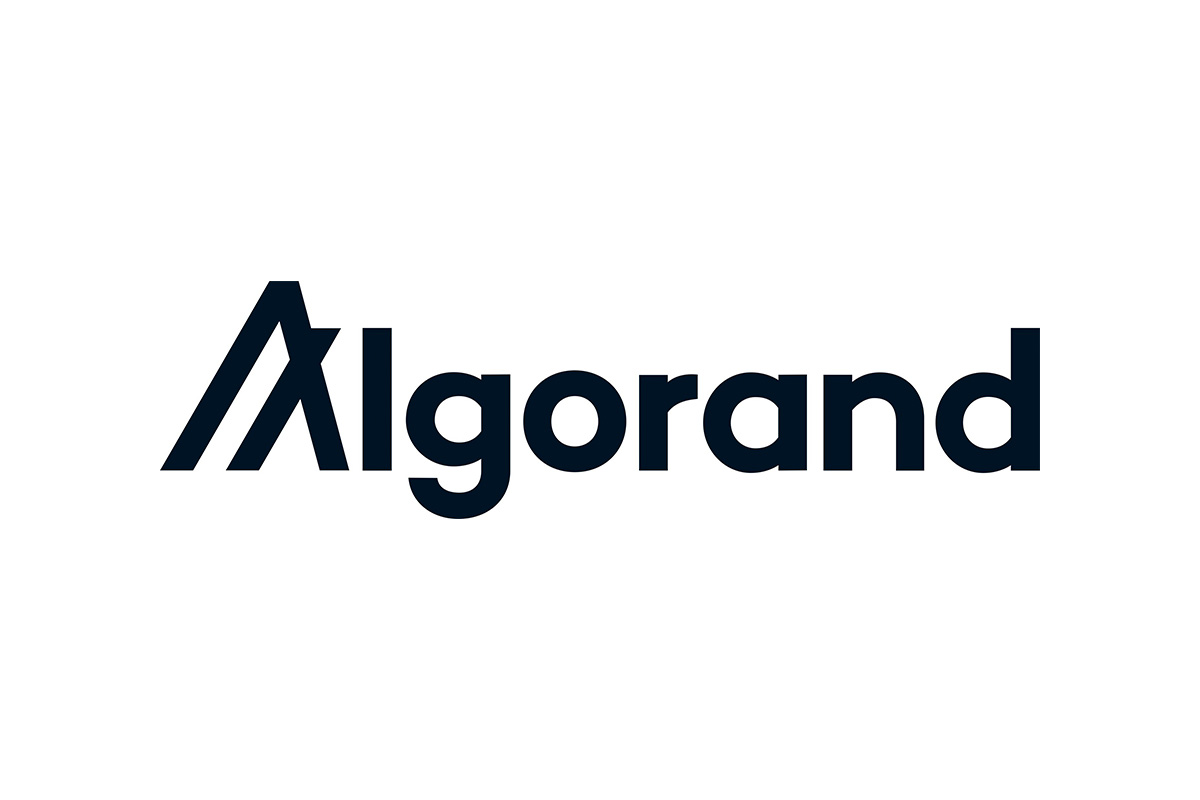
In a whitepaper published today, World Chess (LSE: CHSS) and the Algorand Foundation (ALGO) conceptualize a new blockchain-based system that would establish secure, private, and verifiable credentials for global sports organizations, including chess. Grandmaster Evgenij Miroshnichenko contributed to the paper alongside the Algorand Foundation and World Chess.
The move comes as interest in chess hits a new high, driven by popular television series on Netflix and the BBC, the 2024 awarding of the youngest-ever world chess champion, and the inclusion of chess for the first time in the Esports World Cup later this year.
If adopted, the system would allow chess players to independently manage their identity and credentials across all chess platforms and organizations with a single decentralized ID, and one login credential for everywhere they play. They could then easily “port” their identity, achievements, records of play, rankings, and rewards across online chess platforms, as well as seamlessly from the digital world to in-person games and tournaments. This provides them with a much easier way to prove their identity, no matter their status or documentation; it would also reduce tournament application times significantly. Chess organizations would then be able to welcome even more players to their competitions, including those who have built their chess career solely online, as well as players who have previously only competed in tournaments held by other organizations.
Among other benefits, the adoption of a “global chess passport” would make it much easier for organizers and chess clubs and federations alike to onboard and register players, both online and offline.
Another benefit of the proposed system is to safeguard fair play. As chess becomes increasingly integrated into e-sports and online competitions, the use of AI programs or player fraud (one player representing another) is an increasing concern. Being able to confirm player integrity (including whether they have been banned for cheating on any other platform) ensures credibility of chess contests and competitions. These verifiable credentials also preserve player privacy. They can be used to confirm player eligibility and relevant identity data without providing access to sensitive documentation, such as passports. Finally, identity verification also prevents fraud in tournament payouts. Phishing and other attempts to steal winnings are on the rise; this ensures only the rightful winner can access their prize funds.
“I think that chess needs its version of the global e-version of drivers license. It’s a global game, and using blockchain for the benefit of having one universal independently verifiable ID is something that both players and organizers will certainly benefit from,” says Ilya Merenzon, CEO of World Chess.
“This initiative is not just about chess; it’s about the future of fair play and verifiable achievement across all sports and esports,” said Bruno Martins, principal architect at the Algorand Foundation and co-author of the whitepaper. “Chess has a rich history of proving the usefulness of new technologies. In this case, World Chess is showing the integrity, privacy, and portability of records in any competitive arena is not only possible – it’s in the best interest of every player, everywhere.”
Statista estimates that the market for esports should reach $4.8 billion in 2025, with nearly 900 million players by 2029 (source), all of which could benefit from better cross-platform registration for online and in-person competitions.
The full whitepaper and more information about the proposed open-source system can be found here. Chess platforms, esports organizations and other parties interested in contributing to the project can get involved by contacting [email protected].
The post World Chess and the Algorand Foundation propose leveling the playing field with a “chess passport” appeared first on News, Events, Advertising Options.
Blockchain
Blaqclouds Board Approves 30-Day Revenue Acceleration and Ecosystem Monetization Plan
Blockchain
Blocks & Headlines: Today in Blockchain – April 23, 2025 – EDPB, Binance, MicroCloud, Nile Coin, TruaBroker

Welcome to Blocks & Headlines, your daily op-ed–style briefing on the most significant developments in blockchain technology and the cryptocurrency industry. Today’s dispatch spotlights landmark privacy guidelines from the European Data Protection Board, Malaysia’s engagement with Binance’s founder to turbocharge digital finance, a groundbreaking blockchain reconstruction solution from MicroCloud Hologram, the impending launch of Nile Coin on Solana by Hyperscale Data’s subsidiary BitNile.com, and Trua’s AI-driven TruaBroker compliance platform. These stories underscore how regulation, infrastructure innovation, token launches, and compliance automation are shaping Web3’s next chapter.
1. EU’s Privacy Guardrails: EDPB Proposes Blockchain Data Access Guidelines
Source: Decrypt
The European Data Protection Board (EDPB) has published draft guidelines aimed at reconciling blockchain’s immutable architecture with GDPR’s privacy mandates. Key directives include avoiding on-chain storage of personal data when it conflicts with Data Protection by Design and by Default, conducting Data Protection Impact Assessments (DPIAs) for high-risk processing, and implementing organizational and technical measures to limit default data access to an “indefinite number of persons” Decrypt.
Op-Ed Insight:These guidelines mark a pivotal moment. By mandating privacy-by-design and off-chain anchoring of sensitive information, the EDPB effectively pressures projects to adopt hybrid architectures—where on-chain transparency coexists with off-chain confidentiality. While defenders of pure decentralization decry potential censorship, privacy advocates hail these guardrails as essential to prevent authoritarian misuse of immutable ledgers. Ultimately, projects that bake data protection into their smart contracts and storage layers will secure both regulatory compliance and user trust.
2. Malaysia Taps Binance’s CZ for a Blockchain Finance Overhaul
Source: Bitcoin News
Malaysian Prime Minister Anwar Ibrahim has initiated high-level discussions with Changpeng Zhao (CZ), Binance’s founder and former CEO, to position Malaysia as Southeast Asia’s preeminent hub for tokenization and digital finance. The dialogue focuses on leveraging blockchain to modernize capital markets, streamline cross-border payments, and foster regulatory sandboxes that attract global Web3 startups Beamstart.
Op-Ed Insight: Engaging CZ signals Malaysia’s ambition to leapfrog legacy financial architectures by importing Binance’s exchange expertise and compliance playbooks. Yet success hinges on crafting balanced regulations that encourage innovation without compromising investor protection. If Malaysia can marry CZ’s technical insights with proactive oversight—such as clear licensing pathways for decentralized exchanges—it could catalyze a shift in regional capital flows from traditional finance hubs like Singapore to Kuala Lumpur.
3. MicroCloud Hologram’s VSS-Powered Blockchain Reconstruction Solution
Source: PR Newswire
MicroCloud Hologram Inc. (NASDAQ: HOLO) unveiled an innovative blockchain reconstruction solution that employs Verifiable Secret Sharing (VSS) technology to split and distribute private key shares across distributed nodes. Four core components—VSS-based key sharding, redundant node storage, dynamic participant verification, and incentive-driven reward/penalty mechanisms—enable rapid, trustless restoration of blockchain data integrity following attacks or node failures PR Newswire.
Op-Ed Insight: As DeFi and on-chain finance proliferate, uninterrupted availability and data consistency have become paramount. MicroCloud’s VSS approach transforms reconstruction from a centralized recovery process into a decentralized protocol, minimizing reliance on any single custodian. This paradigm could redefine disaster-recovery benchmarks: imagine an exploited smart contract whose state is instantly rebuilt through pre-sharded secrets, preserving transactional continuity without manual key escrow.
4. BitNile.com to Launch Nile Coin on Solana Blockchain
Source: GlobeNewswire
Hyperscale Data, Inc. (NYSE American: GPUS) announced that its social gaming subsidiary BitNile.com will launch Nile Coin on Solana on May 1, 2025. Solana’s high throughput and low fees position it as an optimal platform for BitNile’s gaming ecosystems, where Nile Coin will fuel in-game economies, reward completions, and facilitate peer-to-peer transactions. Further details on tokenomics and utility are expected in the coming weeks GlobeNewswire.
Op-Ed Insight: While new token launches are ubiquitous, Nile Coin’s Solana-native design leverages one of the fastest blockchains for scalable micro-transactions—a critical requirement for social gaming. Success will depend on robust token utility, partnership integrations, and community incentives. If BitNile.com can embed Nile Coin across multiple entertainment verticals (e-sports, virtual concerts, NFTs), it could ignite a network-effect flywheel, bolstering both user engagement and on-chain liquidity.
5. TruaBroker: Automating Compliance with AI-Powered Trust Credentials
Source: PR Newswire (via Benzinga)
Trua, a leader in digital trust credentials, launched TruaBroker , a cloud-based platform that automates compliance for broker-dealers and Registered Investment Advisors. Built on Trua’s patented Continuous Evaluation engine, TruaBroker delivers real-time monitoring of FINRA, SEC, and NFA records; identity verification; and continuous credential checks—all without IT integration. Its AI algorithms flag licensing gaps, disciplinary histories, and civil actions, enabling firms to maintain audit readiness and mitigate risk proactively Benzinga.
, a cloud-based platform that automates compliance for broker-dealers and Registered Investment Advisors. Built on Trua’s patented Continuous Evaluation engine, TruaBroker delivers real-time monitoring of FINRA, SEC, and NFA records; identity verification; and continuous credential checks—all without IT integration. Its AI algorithms flag licensing gaps, disciplinary histories, and civil actions, enabling firms to maintain audit readiness and mitigate risk proactively Benzinga.
Op-Ed Insight: In an era when on-chain transactions intersect with regulated financial activities, seamless compliance is non-negotiable. TruaBroker’s model—issuing reusable, verifiable digital credentials anchored by blockchain—offers a blueprint for how KYC/AML processes can evolve into dynamic, trustless workflows. As DeFi platforms eye tokenized securities and on-ramps, integrating similar continuous-evaluation mechanics could become a competitive differentiator, blending self-sovereign identity with regulatory assurance.
Conclusion
Today’s headlines illustrate blockchain’s multifaceted evolution: from regulatory frameworks enforcing privacy and consumer rights, to infrastructure innovations that ensure resilience; from national strategies enlisting industry titans to drive tokenization, to platform launches forging new digital economies; and from compliance automation transforming institutional trust to AI-powered credentialing.
As the space matures, successful projects will be those that:
-
Embed privacy and compliance by design—aligning with GDPR and global regulations.
-
Invest in self-healing architectures—leveraging cryptographic primitives like VSS.
-
Cultivate vibrant token ecosystems—anchored on high-performance chains.
-
Adopt continuous, AI-driven governance—bridging the gap between Web3 innovation and traditional financial oversight.
Stay tuned to Blocks & Headlines for incisive commentary and daily updates on the blockchain stories that shape tomorrow’s decentralized future.
The post Blocks & Headlines: Today in Blockchain – April 23, 2025 – EDPB, Binance, MicroCloud, Nile Coin, TruaBroker appeared first on News, Events, Advertising Options.
-

 Blockchain Press Releases5 days ago
Blockchain Press Releases5 days agoBybit’s CEO Meets with Vietnam’s Minister of Finance to Support Regulatory Sandbox and Strengthen Crypto Compliance
-
Blockchain6 days ago
Relm Insurance and Liva Insurance Obtain Central Bank Approval in the UAE for Web3 Insurance Solutions
-

 Blockchain6 days ago
Blockchain6 days agoGlobal Islamic Fintech Forum Kicks off in Dubai
-
Blockchain3 days ago
Islamic finance Market to Reach $3.4 Trillion by 2027 in the short run and $7.7 Trillion by 2033 Globally, at 12.0% CAGR: Allied Market Research
-

 Blockchain Press Releases6 days ago
Blockchain Press Releases6 days agoBybit launches Crypto Surf: Copy Traders and Bots Battle for 250K USDT
-

 Blockchain2 days ago
Blockchain2 days agoBlocks & Headlines: Today in Blockchain – April 22, 2025 (Activity‑Weighted Consensus, Pectra Upgrade, Yoki Legacy, Verae–Evercycle, Earth Day)
-

 Blockchain Press Releases6 days ago
Blockchain Press Releases6 days agoMEXC Announces Listing of Initia (INIT) with a 115,000 INIT and 50,000 USDT Prize Pool
-

 Blockchain7 days ago
Blockchain7 days agoValuit: Revolutionizing Access to Private Markets in the Digital Economy

